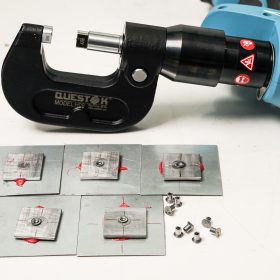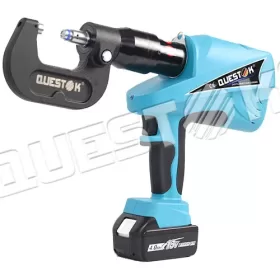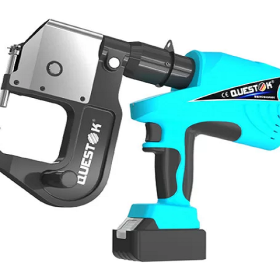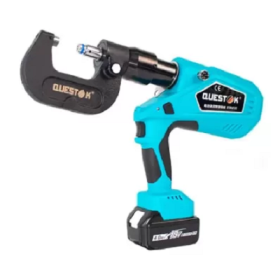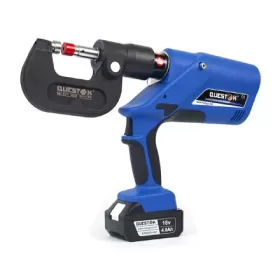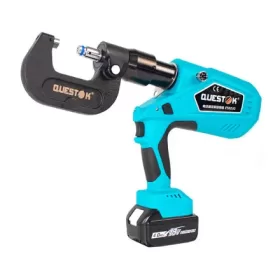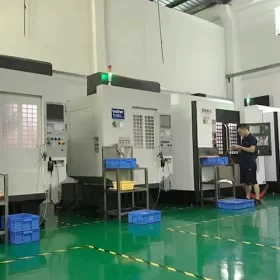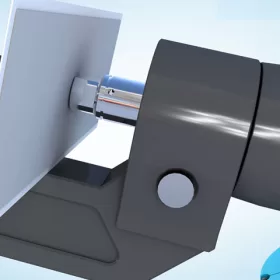Riveting vs. Welding- A Head-to-Head Comparison for On-Site Projects
In the realm of on-site construction, selecting the appropriate joining technique is crucial for ensuring structural integrity and efficient project execution. Two prevalent options are riveting and welding, each offering unique advantages and considerations. This article presents a comprehensive comparison of riveting versus welding to guide contractors in making informed decisions for their projects.
Process and Equipment
Riveting: Riveting involves inserting a rivet, a metal fastener, through pre-drilled holes in the materials to be joined. A riveting gun or machine applies pressure, flattening the rivet and creating a permanent connection.
Welding: Welding employs a welding torch to fuse the materials together by melting their edges. The equipment used varies depending on the welding process (e.g., arc welding, gas welding), but typically involves a power source, electrodes, and shielding gas.
Strength and Durability
Riveting: Riveted joints are generally strong and durable, providing a reliable mechanical connection. However, they may not be suitable for applications requiring extreme loads or demanding environments.
Welding: Welded joints offer superior strength compared to riveting, as the materials are fused together, creating a continuous bond. Welded structures can withstand higher loads and exhibit greater resistance to environmental factors.
Cost and Time
Riveting: Riveting is generally less expensive than welding due to the lower equipment cost and less skilled labor required. The process is also faster, as it requires minimal preparation and cleaning.
Welding: Welding can be more costly than riveting, especially for complex projects. The equipment and consumables are more specialized, and the process demands skilled welders and safety precautions. Welding can also take longer, as it involves cleaning, preparation, and post-weld inspection.
Aesthetics and Flexibility
Riveting: Riveted joints often have a visible, decorative appearance, making them suitable for projects where aesthetics are important. Additionally, rivets allow for some flexibility in the joint, accommodating minor thermal or mechanical expansions.
Welding: Welded joints typically have a seamless, less visible appearance. However, welded structures are less flexible than riveted structures, limiting their ability to handle thermal or mechanical stress variations.
Environmental Considerations
Riveting: Riveting does not produce fumes or hazardous byproducts, making it an environmentally friendly option.
Welding: Welding can generate fumes and exhaust gases, which require proper ventilation and safety measures. Gas welding also releases carbon dioxide and other greenhouse gases.
Inspection and Maintenance
Riveting: Riveted joints are relatively easy to inspect and maintain. Any loose or damaged rivets can be replaced or tightened by skilled laborers.
Welding: Welded joints require more specialized inspection techniques, such as ultrasonic testing or radiographic testing, to assess the joint integrity. Maintenance involves grinding, rewelding, or replacing damaged areas, which can be labor-intensive.
Applications
Riveting: Riveting is commonly used in structural steel, sheet metal, and HVAC applications where strength, cost, and aesthetics are important considerations.
Welding: Welding is preferred for high-load structures, critical connections, and applications where strength and durability are paramount, such as in bridges, pipelines, and heavy machinery.
- Company News
- Industry News
- Tag
- Tags
-
The Advantages of Questok Rivet Guns: Precision, Efficiency, and Durability
In industrial fastening applications, the choice of tools directly impacts productivity, safety, and long-term cost-effectiveness. Questok rivet guns have emerged as a standout solution for professionals across aerospace, automotive, and construction sectors. Combining advanced engineering with user-centric design, these tools deliver unmatched performance. Below are the key advantages that make Questok rivet guns a preferred choice:
-
Rivet Gun FAQ
Rivet Gun FAQ-SPR
-
Fast Assembly and Repair With Cordless Solid Rivet Gun
Questok cordless solid rivet gun stands out as a pivotal innovation, merging portability with power to facilitate efficient and effective fastening in a myriad of applications.
-
Redifine The Role of Self-piercing Riveting Gun Machine
Self-piercing riveting adopts high-speed mechanical fastening skill that joins thin sheet materials, typically steel and aluminum alloys.
-
The Latest Innovations in Clinching Tool Design
Explore the latest innovations in clinching tool design, redefining precision, efficiency, and versatility in material joining.
-
The Application and Maintenance of Self-Piercing Rivet Guns
Delve into the applications of self-piercing rivet guns in the automotive and aerospace industries and reveal the essential maintenance practices that ensure their accuracy and efficiency.
-
Rivetless Riveting Gun for Ventilation Duct Projects
The ventilation duct rivetless gun is a tool for riveting ventilation ducts without rivets.
-
Guide to Using Self-Piercing SPR Riveting Gun
In the automotive industry, self-piercing SPR (Self-Piercing Rivet) riveting guns are commonly used for joining metal components in vehicle bodies, including BMW vehicles.
-
Rivet Gun FAQ
Rivet Gun FAQ-SPR
-
Versatile Fastening- Applications of the Handheld Rivet Gun Across Industries
In the realm of fastening, the handheld rivet gun stands as a testament to ingenuity and versatility. Its ability to effortlessly join materials with sheer strength and permanence has revolutionized manufacturing and construction processes, leaving an enduring mark on diverse industries. Aerospace: Where precision and reliability are paramount, the rivet gun shines. In aircraft assembly, […]
-
Time-Saving Tools- Speeding Up Projects with Electric Blind Rivet Guns
In the whirlwind of project deadlines, every minute counts. But what if there was a tool that could dramatically reduce assembly time, giving you an edge in the race against the clock? Enter the electric blind rivet gun: your secret weapon for lightning-fast and effortless riveting. Electric blind rivet guns are the ultimate time-savers for […]
-
Streamlining Fastening- How an Electric Blind Rivet Gun Enhances Efficiency
Introduction In the realm of manufacturing and assembly, fastening plays a crucial role in securing components and ensuring structural integrity. Traditional manual rivet guns, while reliable, are often time-consuming and labor-intensive. The advent of electric blind rivet guns has revolutionized the fastening process, significantly enhancing efficiency and productivity. This article delves into the benefits of […]
-
The Role of Automation in Electric Rivetless Clinching
Electric rivetless clinching (ERC) is a lightweight joining process that eliminates the need for rivets or other fasteners. This can lead to significant cost savings and increased production efficiency. Automation plays a critical role in ERC, enabling high-speed and high-volume production. Automated Feed Systems Automated feed systems are used to accurately position the two workpieces […]
-
Why Choose a Universal Self-Piercing Riveting Gun for Your Projects?
In the realm of construction and fabrication, riveting guns stand as indispensable tools for creating secure and robust connections. Among the various types available, universal self-piercing riveting (SPR) guns have emerged as a game-changer due to their versatility and efficiency. This article will delve into the compelling reasons why choosing a universal self-piercing riveting gun […]
-
Why Choose Stainless Steel Hollow Rivets for Your Projects?
In the world of industrial manufacturing, choosing the right fasteners for your projects is crucial for ensuring longevity and reliability. Among the many options available, stainless steel hollow rivets stand out as a superior choice for a wide range of applications. This article delves into the compelling reasons why stainless steel hollow rivets are the […]
-
Top Trends in Electric Rivetless Clinching Guns
In the realm of fastening technology, electric rivetless clinching guns have emerged as a revolutionary solution for a wide range of industrial applications. These advanced tools offer several преимущества and capabilities, revolutionizing the way businesses approach their fastening needs. Adoption of Brushless Motors Brushless motors have gained significant traction in electric rivetless clinching guns due […]
